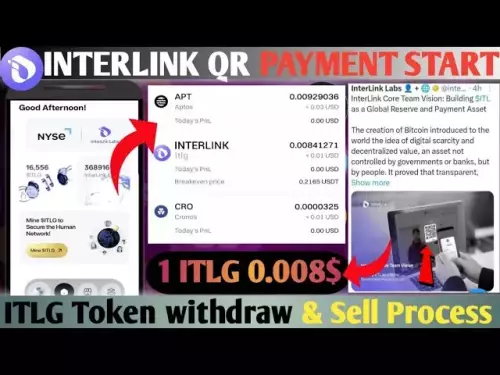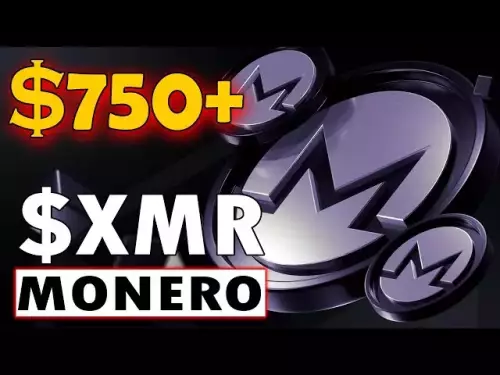-
 bitcoin
bitcoin $107208.295278 USD
-1.54% -
 ethereum
ethereum $3874.629914 USD
-1.38% -
 tether
tether $1.000440 USD
0.03% -
 bnb
bnb $1089.465513 USD
-5.53% -
 xrp
xrp $2.327672 USD
-1.65% -
 solana
solana $184.766505 USD
-0.73% -
 usd-coin
usd-coin $1.000076 USD
0.02% -
 tron
tron $0.310632 USD
-1.99% -
 dogecoin
dogecoin $0.187615 USD
-1.60% -
 cardano
cardano $0.633389 USD
-2.75% -
 ethena-usde
ethena-usde $0.999553 USD
0.03% -
 hyperliquid
hyperliquid $35.608231 USD
-4.13% -
 chainlink
chainlink $16.876114 USD
-3.98% -
 stellar
stellar $0.312239 USD
-0.91% -
 bitcoin-cash
bitcoin-cash $473.262969 USD
-7.09%
Is it really profitable to move bricks in the currency circle?
Brick moving offers potential profits by exploiting price differences across cryptocurrency exchanges, but requires market research, risk management, technical skills, and patience to navigate challenges like market slippage and regulatory complexities.
Jan 09, 2025 at 10:39 am

- Understanding the Concept of "Moving Bricks" in Cryptocurrency
- Identifying Advantages and Disadvantages of Brick Moving
- Exploring Tips for Profitable Brick Moving
- Analyzing Key Considerations for Successful Brick Moving
- Common Challenges and Pitfalls of Brick Moving
- FAQs Regarding Brick Moving in the Cryptocurrency Circle
- "Moving bricks" refers to the process of transferring cryptocurrency assets from one exchange to another.
- This involves buying cryptocurrency on one exchange at a lower price and selling it on another exchange at a higher price, generating a profit.
- The profit margin is determined by the price difference between the two exchanges.
- Potential for high profits if market conditions are favorable.
- Flexibility to take advantage of price differences across multiple exchanges.
- Increased liquidity by accessing a wider pool of buyers and sellers.
- Market volatility can lead to significant losses if prices fluctuate rapidly.
- High transaction fees can reduce profitability.
- Regulatory complexities and compliance requirements can add obstacles.
- Identify exchanges with significant price differences for the desired cryptocurrency.
- Use automated trading bots to monitor price movements and execute trades efficiently.
- Consider using over-the-counter (OTC) markets for large transactions to avoid slippage.
- Monitor transaction fees and network congestion to minimize costs.
- Market Research: Conduct thorough research on cryptocurrency markets, price trends, and regulatory frameworks.
- Risk Management: Establish clear risk parameters and exit strategies to mitigate potential losses.
- Technical Skills: Develop proficiency in using trading platforms, order types, and risk management tools.
- Patience and Discipline: Successful brick moving requires patience and discipline to avoid emotional decision-making.
- Market Slippage: Cryptocurrency prices can change rapidly, resulting in slippage between the buying and selling prices.
- Incomplete Orders: Exchanges may experience technical issues or liquidity constraints, leading to incomplete or canceled orders.
- Hidden Fees: Some exchanges may charge additional fees beyond the initial transaction fee, such as network fees or withdrawal fees.
- Is brick moving legal?
Yes, brick moving is generally legal, but it is important to comply with regulatory requirements and avoid illegal activities such as money laundering.
- What are the risks of brick moving?
Market volatility, slippage, trading fees, and regulatory changes are some of the risks associated with brick moving.
- How much capital is needed to start brick moving?
The required capital varies depending on the desired cryptocurrency, market conditions, and risk tolerance.
- Is it necessary to use a trading bot for brick moving?
Trading bots can assist with automated trade execution, but they are not essential for profitable brick moving.
- How do taxes affect brick moving profits?
Cryptocurrency transactions are subject to taxation laws in different jurisdictions. It is crucial to understand the tax implications of brick moving.
Disclaimer:info@kdj.com
The information provided is not trading advice. kdj.com does not assume any responsibility for any investments made based on the information provided in this article. Cryptocurrencies are highly volatile and it is highly recommended that you invest with caution after thorough research!
If you believe that the content used on this website infringes your copyright, please contact us immediately (info@kdj.com) and we will delete it promptly.
- Vitalik Buterin's Efficiency Ratio: A New Standard for ZK-FHE Performance
- 2025-10-18 20:25:15
- OpenSea's SEA Token: Airdrop, Token Launch, and a Bold 'Trade Everything' Vision
- 2025-10-18 20:45:14
- BlockDAG, Crypto, and ROI: A New Era of Investment
- 2025-10-18 20:45:14
- Pudgy Penguins, ETF Rumors, and Price Swings: What's the Haps?
- 2025-10-18 20:50:12
- Bitmine's Ethereum Blitz: Is This the ETH Buying Opportunity of 2025?
- 2025-10-18 20:50:12
- Piso WiFi Revolution: From 10.0.0.1 Portals to Cross-Chain Swaps!
- 2025-10-18 20:55:12
Related knowledge

Practical parameter settings for a Bitcoin multi-timeframe moving average system
Sep 18,2025 at 10:54pm
Optimizing Timeframe Combinations for Bitcoin Trading1. Selecting appropriate timeframes is crucial when building a multi-timeframe moving average sys...

How can I filter out false breakouts in Dogecoin high-frequency trading?
Sep 22,2025 at 01:00am
Understanding False Breakouts in Dogecoin Trading1. A false breakout occurs when Dogecoin's price appears to move beyond a defined support or resistan...

Techniques for identifying tops and bottoms in the Bitcoin on-chain NVT model
Sep 20,2025 at 07:54pm
Understanding the NVT Model in Bitcoin Analysis1. The Network Value to Transactions (NVT) ratio is often described as the 'P/E ratio' of the cryptocur...

What does the surge in open interest in Bitcoincoin futures mean?
Sep 20,2025 at 11:18pm
Understanding the Surge in Dogecoin Futures Open Interest1. A surge in open interest within Dogecoin futures indicates a growing number of active cont...

How can I use the Ethereum USDT premium to gauge market sentiment?
Sep 18,2025 at 11:55pm
Understanding the Ethereum USDT Premium1. The Ethereum USDT premium refers to the price difference between USDT (Tether) traded on Ethereum-based plat...

What should I do if Ethereum staking yields decline?
Sep 20,2025 at 06:18am
Understanding the Causes Behind Declining Ethereum Staking Yields1. The Ethereum network transitioned to a proof-of-stake consensus mechanism with the...

Practical parameter settings for a Bitcoin multi-timeframe moving average system
Sep 18,2025 at 10:54pm
Optimizing Timeframe Combinations for Bitcoin Trading1. Selecting appropriate timeframes is crucial when building a multi-timeframe moving average sys...

How can I filter out false breakouts in Dogecoin high-frequency trading?
Sep 22,2025 at 01:00am
Understanding False Breakouts in Dogecoin Trading1. A false breakout occurs when Dogecoin's price appears to move beyond a defined support or resistan...

Techniques for identifying tops and bottoms in the Bitcoin on-chain NVT model
Sep 20,2025 at 07:54pm
Understanding the NVT Model in Bitcoin Analysis1. The Network Value to Transactions (NVT) ratio is often described as the 'P/E ratio' of the cryptocur...

What does the surge in open interest in Bitcoincoin futures mean?
Sep 20,2025 at 11:18pm
Understanding the Surge in Dogecoin Futures Open Interest1. A surge in open interest within Dogecoin futures indicates a growing number of active cont...

How can I use the Ethereum USDT premium to gauge market sentiment?
Sep 18,2025 at 11:55pm
Understanding the Ethereum USDT Premium1. The Ethereum USDT premium refers to the price difference between USDT (Tether) traded on Ethereum-based plat...

What should I do if Ethereum staking yields decline?
Sep 20,2025 at 06:18am
Understanding the Causes Behind Declining Ethereum Staking Yields1. The Ethereum network transitioned to a proof-of-stake consensus mechanism with the...
See all articles










































































